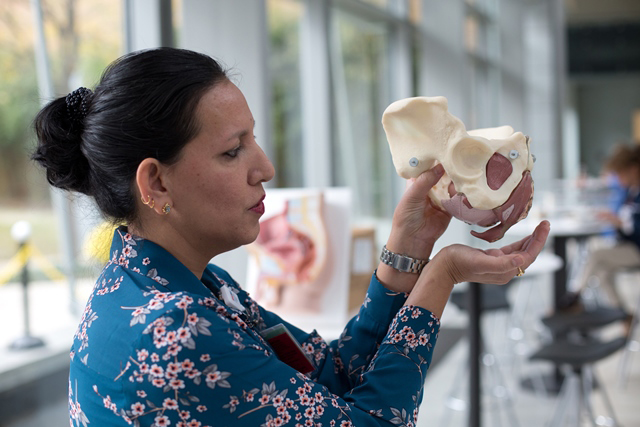After the first session – I worked on the exercises for a week – I had immediate results.

Pelvic Floor Rehab offers a non-surgical solution for incontinence.
Ralph struggled daily to keep the low-level anxiety from creeping into his life. He had a mental map of every bathroom and trashcan at his frequent destinations. Incontinence, he said, was a stress he could manage for nearly 20 years, until it became an embarrassment.
He was among the millions of Americans who deal with the pelvic floor disorder. Incontinence is often-misunderstood and so shrouded in stigma that we’ve chosen to identify this patient, who is in his late 70s, by another name.
Ralph used an elaborate system of three layers of Depends and a guard to contain the leakage, which he says was bought on by the removal of his prostate in the late ‘80s.
“It was on my mind 24-7,” he says. “I’m worried about being discreet. I’m worried about changing the pads. I’m worried about seeing it. I’m worried about disposing of the guard in a public arena. That’s anxiety-provoking to put it minimally.”
He went to see his urologist, Phillip Brackin, MD, to explore surgical options. Not so hasty, Brackin said, encouraging Ralph to give pelvic floor rehabilitation a chance first.
Ralph worked with Rachna Mehta, DPT, a physical therapist at the RWJ Hamilton Fitness & Wellness center. Rachna began by assessing the strength of Ralph’s pelvic floor.
“The pelvic floor is actually a sling muscle,” Rachna explains. “It goes from the front of the pubic bone to the back. With incontinence, most people have accidents when they are working against gravity. For Ralph, when he would go from sitting to standing, he would leak because he wasn’t able to activate his pelvic floor.”
Coughing and sneezing are also common triggers of leakage, she says.
Ralph’s pelvic floor was strong but inactive. Rachna strengthened it and taught him how to activate it with Kegels. Often, she says, patients struggle to isolate their pelvic floor and instead use their abs or glutes for the contractions. That’s where biofeedback helps.
Patients will wear two sensors – one attached to the abdominals, the other to pelvic floor muscles – to see which group they are using for the Kegels. Patients work through a progression of Kegels in different positions with the intention of limiting or eliminating leakages. The rehabilitation process also requires patients to perform Kegels on their own.
Ralph says he noticed a change right away.
“After the first session – I worked on the exercises for a week – I had immediate results. At that point, I could have lived with it for the rest of my life, but I made a commitment for the whole regime.”
Rachna says that Ralph’s success is due to his commitment to the program.
“His motivation was remarkable. Willpower is such a big piece of it and believing that you can overcome anything. If I motivated him, he was open to trying everything. I think that is huge. Compliance is another big piece, but if they truly believe that they can get better, they will do it.”
Unfortunately, people facing incontinence can often start isolating themselves socially due to their fear of accidents, says Rachna. “Incontinence isn’t a normal part of aging, even though people think it is. People need to talk about it and know that there are non-surgical options, there are conservative options and rehabilitation is available for this.”
Take This Self-Test
Pelvic floor rehabilitation is for men and women. If you experience any of the follow symptoms, you may benefit from treatment:
- Feeling the sudden urge to urinate?
- Does a cough or a sneeze cause a leak?
- Experiencing pelvic pain with sexual activity?
- Have pelvic pain when sitting more than 10 minutes?
- Have you had a baby recently and still have pelvic pain and weakness?
- Are you constipated?
- Having bowel dysfunction or fecal incontinence?
- Feel burning or spasms in your pelvic floor when you are stressed?
With proper treatment these conditions can often be cured and almost all can be managed so that patients experience relief and control.